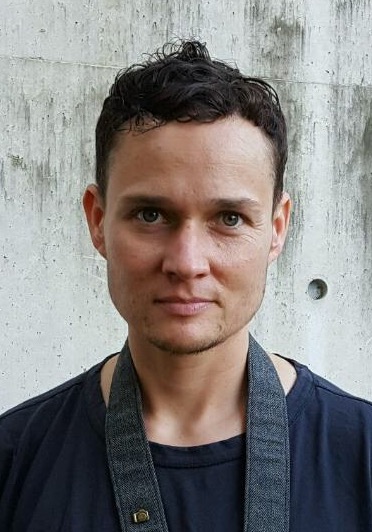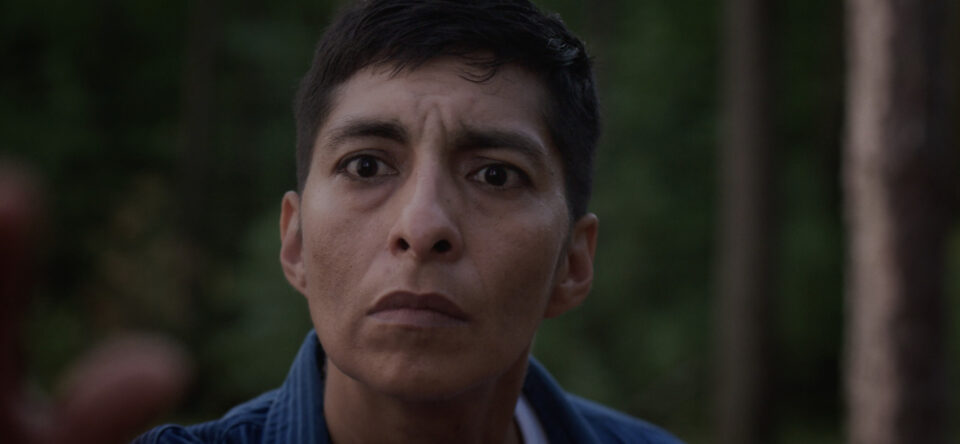
Elliot Mongtague
Director of “Light on a Path, Follow”
PROGRAM 1
What inspired you to make “Light on a Path, Follow”? What were some challenges?
I’ve been interested in representations of queer and trans pregnancy for the last 15 years. I made an experimental short film (Well Dressed) in graduate school, but could find very little on the subject back then when conducting research. It’s exciting to start seeing more nuanced stories of trans pregnancy in the news and media. I’ve often aligned the desire to go on testosterone with the desire to be pregnant. There’s a very powerful thing that happens when you put something into your body and it then has the potential to change so rapidly – it’s magical. And for a trans person to have been on T and then come off of it and then get pregnant, that’s so powerful.
I wanted to tell a story of an older trans person who decides on their own to be pregnant in the mid 1990s. They have to tap into so much inner strength in order to make that decision, but they (as any pregnant person) only have so much control. That’s why I wanted to make this a ghost story – where the main character is haunted yet guided by this mysterious spirit. The spirit represents our (tr)ancestors, those who guide us from the past or perhaps the future. It makes me think about how we think about community. How even if somebody is “alone”, they are still in community with themselves and the beings they are bringing into the world, as well as in community with spirits around them.
The making of this film was challenging in that all narrative films with small budgets are hard to make. But this limited budget also opened doors and the people who worked on this were extremely dedicated, regardless of how they identified. (Though most of the crew identified as trans or queer, which was a priority of ours.) We were very intentional with who we brought on, we wanted a set that would be nourishing and healing for people to be a part of. We knew this film would not easily be legible to a lot of people, but we didn’t make a film with the priority of it being “legible”. We wanted to make a film that we had not yet seen.
What do you think of the current state of trans/gnc filmmaking? Could you talk about it in relation to mainstream media and LGBTQ+ media?
I think we are in an exciting moment with trans/gnc filmmaking both in representation and who is behind the camera and/or writing the stories. It is crucial that trans people are telling their own stories. We are aware of the many problematic representations of trans and non-binary characters in the history of film – often as villains or liars or who endured extreme violence (Silence of the Lambs, The Crying Game, Boys Don’t Cry.) Now with mainstream media/film, there is an effort for a more “positive” representations of trans characters, but often through assimilation into traditional modes of storytelling where the narrative is about the person’s transition and often played by cis actors (Transparent, The Danish Girl.) I’m specifically interested in and in conversation with other trans filmmakers and artists who are pushing beyond this surface trans visibility on screen, who often through fantasy, depict the spectral and/or trancestors as a way to visually engage with this idea of trans-temporality, such as Ester Martin Bergsmark, Tourmaline, and Wu Tsang.
Do you have any words for to young trans/gnc/queer folks/or anyone else interested in making films?
Filmmaking is so much more accessible than it was even a decade ago – both in production and in how these works get shown. I’m seeing more and more trans specific film festivals, which is exciting – our work doesn’t just have to exist as a sidebar program. I came into filmmaking in the late 1990s, a time when there was little representation of or work being made by trans/gnc people. If these stories were at all “positive”, they were usually only about the person’s gender and their transition, not the fact that they are a person trying to live and thrive in the world. I would encourage any young trans/gnc/queer folks to be making work right now becuase there is increcibldy fertile ground and people need to see it, especially in the current political crisis we are living through. This younger generation has a far more nuanced perspective on gender, and they are much more aware of the critical intersections of identity politics – race, ethnicity, class, sexuality, and disability. The work that I see my students create continues to amaze me – I tell my students to think of themselves as filmmakers who have really important things to say in the world. They can be in conversation with other filmmakers and artists of different generations. They have so much to offer us, and we as older generations are so lucky to learn from them!
Light on a Path, Follow
Directed by Elliot Montague
USA; 15 minutes
PROGRAM 1
Joaquín, a trans masculine person living in rural 1990s New England, is 8-months pregnant. After encountering a mysterious spirit in the forest, Joaquín goes into labor early. Is this spirit haunting or guiding Joaquín as they await their midwife?
